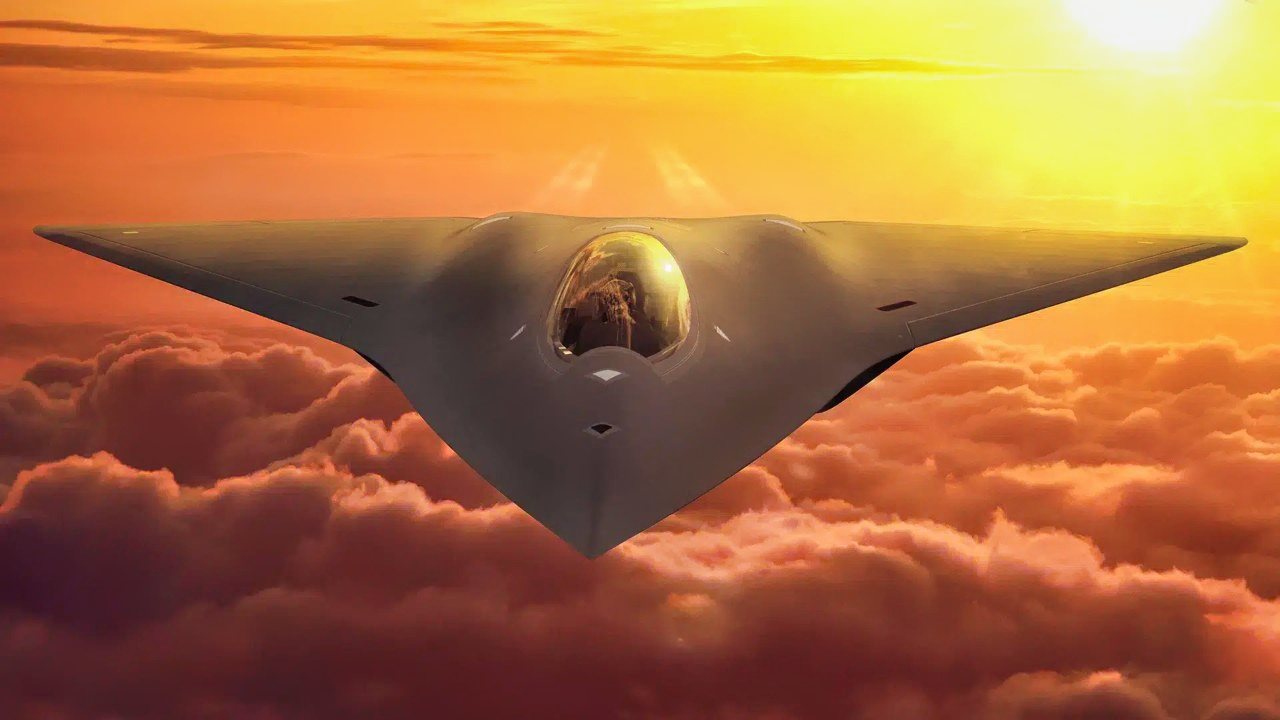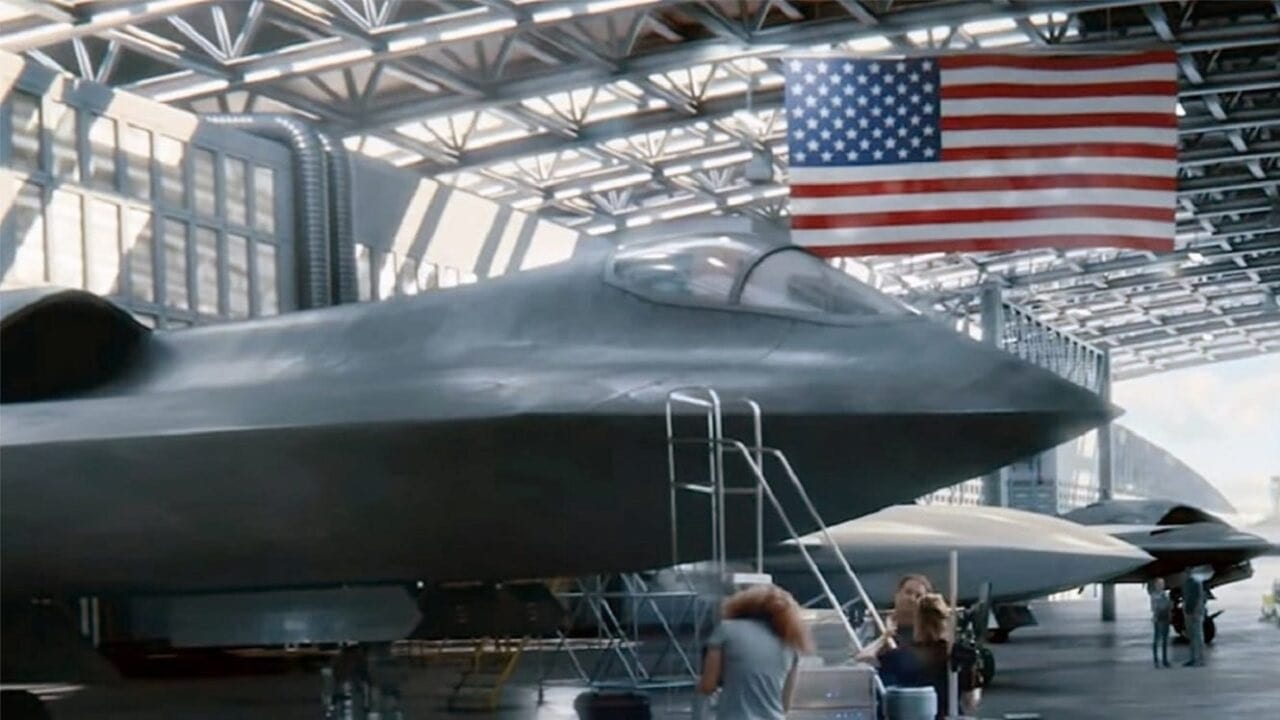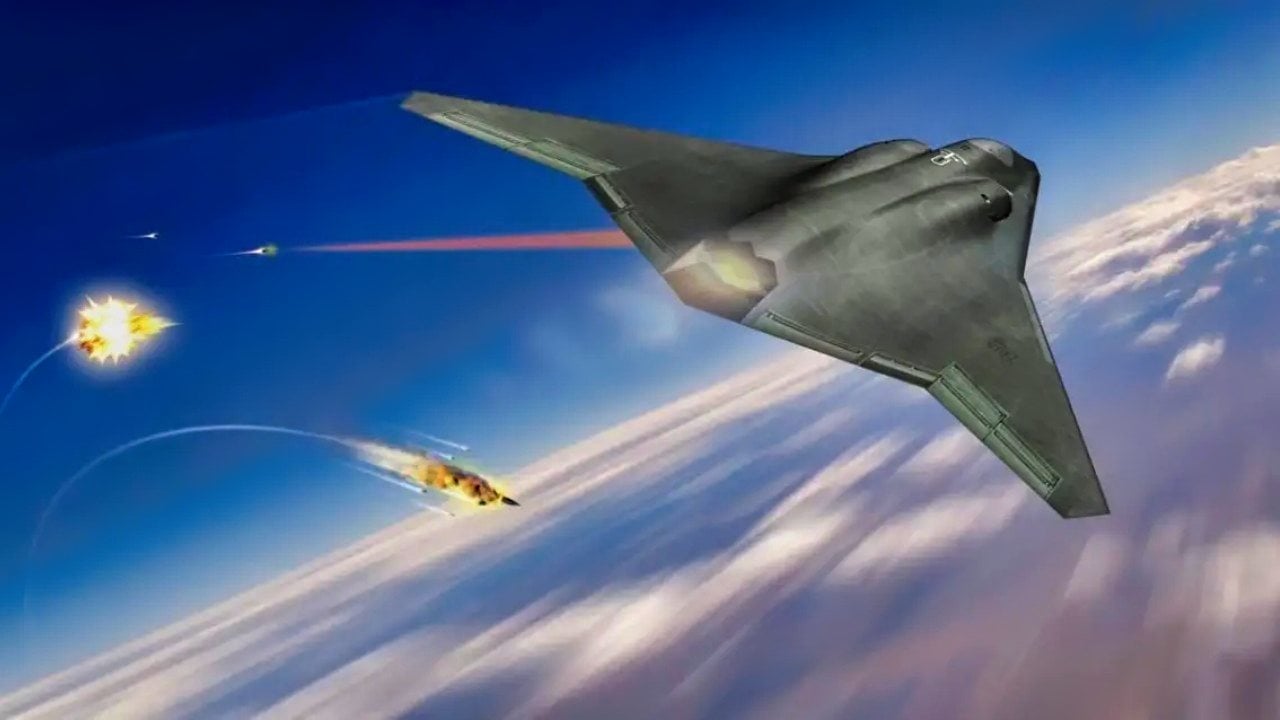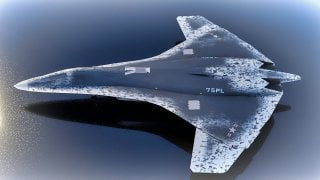NGAD: America's New 6th Generation Fighter Might Be In Serious Trouble
Although NGAD aims to introduce a new stealth fighter alongside AI-enabled drone wingmen, recent statements from Air Force officials suggest a potential shift towards a "Digital Century Series" approach.
Summary and Key Points: The future of the US Air Force's Next Generation Air Dominance (NGAD) program, intended to replace the F-22 Raptor, is uncertain due to budget constraints and competing modernization programs.

-Although NGAD aims to introduce a new stealth fighter alongside AI-enabled drone wingmen, recent statements from Air Force officials suggest a potential shift towards a "Digital Century Series" approach.
-This model emphasizes rapid development cycles and shorter fighter lifespans to keep pace with evolving threats and reduce long-term costs. As the Air Force evaluates its options, the Collaborative Combat Aircraft (CCA) program, focused on AI drones, continues to progress rapidly.
Future of NGAD Uncertain: Air Force May Shift Fighter Jet Strategy"
America’s next stealth fighter, slated to replace the F-22 Raptor by the close of this decade, may no longer be a sure thing, as Air Force officials struggle to balance the ledger amid a long list of high-profile modernization programs. This new fighter, being developed within the Next Generation Air Dominance (NGAD) program, has long been touted as the centerpiece of a new “family of systems,” meant to fly alongside a constellation of AI-enabled drone wingmen. Yet recent remarks from Air Force officials suggest those wingmen have a more certain place within America’s future airpower apparatus than the NGAD fighter itself.
When asked directly about the future of the NGAD program, which was supposed to have a contract announced this year, Air Force Chief of Staff Gen. David Allvin made it clear that the 6th generation fighter’s future may be far from certain.
“The deliberations are still underway, there’s been no decision made. We’re looking at a lot of very difficult options that we have to consider,” Allvin told reporters last week.
In what could mark an even more dramatic shift away from the status quo, Air Force officials have also hinted at a potential return to a fighter development model proposed by Air Force Acquisition Chief Will Roper back in 2019, in which smaller batches of fighters would be designed to operate with shorter lifespans, allowing for rapid design and technology changes as the threat landscape evolves.
This concept was dubbed the “digital century series” approach at the time, thanks to its emphasis on modern all-digital aircraft design and its similarities to the rapidly changing fighter designs of the 1950s and ’60s – ranging from the North American F-100 Super Sabre to the Convair F-106 Delta Dart. Most modern fighter designs, like Lockheed Martin’s F-35, for example, are meant to fly for a half-century or more, with long service lives seen as justification for their massive developmental budgets. Nevertheless, the F-35’s model comes with at least two significant drawbacks.
The first is technological, as purchasing a new fighter today that can remain dominant into the 2070s is all but impossible without adapting to or adopting a variety of new technologies along the way. Being married to a single air superiority fighter design until what could conceivably fly until the close of this century, the Air Force may not be able to rapidly adjust to counter new threats as they emerge.
“We cannot pursue a lot of eggs in one basket, and then find that the threat has advanced,” Allvin explained.
The second drawback is economic, with lifespan sustainment representing a huge portion of a fighter program’s overall cost. To use the F-35 as an example again, its overall program cost is now estimated to exceed $2 trillion over the jet’s lifetime, but some $1.6 trillion of that – a whopping 80 percent of the total cost – comes from maintenance and sustainment over its decades-long lifespan.
Roper’s Digital Century Series model aimed to curtail these costs by instead leaning into agile software development, digital engineering, and open-system modular architecture to allow the Air Force and its prime contractors to rapidly develop and field new fighter designs with enough regularity to limit the lifespan of each to just a decade or two. This would allow the Air Force to continuously field the most advanced airpower assets on the planet while also eliminating the most expensive (later) years of the sustainment cycle.
“‘Built to last’ is a tremendous 20th-century bumper sticker, and the assumption then was, whatever you had was relevant as long as it lasts,” Allvin said. “I’m not sure that’s true anymore.”
There are indeed several good reasons to transition to a model that could produce a new fighter design every decade or two. Not only would such a model mean cutting out the most expensive decades of a fighter’s lifespan, but it would also allow for the rapid adoption of emerging technologies in the steady flow of new fighters maturing toward service. That steady flow of new designs could be a boon unto itself, as it could potentially make fighter designs a truly competitive industry once again.
Today, there are really only three American firms left in the fighter business, all of whom trade largely on other types of military and commercial technologies across their portfolio, as fighter contracts have been few and far between in the modern era. With Lockheed Martin’s Skunk Works winning both 1991’s Advanced Tactical Fighter competition and 2001’s Joint Strike Fighter Competition, it’s been 49 years since any company other than Lockheed Martin has won the right to field a new clean-sheet fighter.
But, the Digital Century Series model would see new fighter designs being fielded every 5-10 years, which would mean the development cycle for the next new fighter would likely begin almost immediately after a contract is awarded for the current one. This could create the necessary incentive for a wider variety of firms to compete in the fighter design space, and that competition could be made even greater by separating design and production contracts into separate awards. This could allow newer or smaller firms that lack the production infrastructure required to mass produce new stealth fighters to compete in the design space, with production contracts potentially still awarded to longstanding primes like Lockheed Martin, Boeing, or Northrop Grumman.
But, there are also some glaring issues with the Air Force potentially reverting to Roper’s concept for fighter production this late in the game for NGAD, which has been in active development since 2014.
“We’ve already built and flown a full-scale flight demonstrator in the real world, and we broke records in doing it,” Roper told Defense News at the Air Force Association’s Air, Space and Cyber Conference in 2020. “We are ready to go and build the next-generation aircraft in a way that has never happened before.”
These aircraft designs, as well as the more powerful and efficient engines being developed to power them, have continued to mature since, with Northrop Grumman bowing out of the competition in early 2024 and Lockheed Martin and Boeing seemingly competing for the contract award. This could spell a significant cost problem: With this effort maturing for about a decade now, transitioning away from a traditional fighter acquisition model at this stage would force a revision of the designs in testing to embrace lower costs and shorter operational lifespans – which is why Air Force Secretary Frank Kendall described such a change as “far too expensive” in 2022 when the concept of the Digital Century Series lost favor.
The Air Force now appears to be coming around to Roper’s way of thinking, but now must weigh the costs of changing the requirements of a program that’s already seen well over a billion dollars and several years’ worth of investment. The stakes of these deliberations are already high, but they’re made even higher because of the tight timetable created by what some might call short-sighted decision-making around the branch’s last air superiority fighter program, the F-22 Raptor.

Despite first taking flight in 1997, the F-22 Raptor is still broadly considered to be the most capable air superiority fighter on the planet thanks to an awe-inspiring combination of stealth, sensor fusion, and good old-fashioned power. But, because the F-22 entered service after the collapse of the Soviet Union and well before Xi Jinping’s rise to power, its production run was cut short after just 186 airframes were produced, only around 150 of which were combat coded (or equipped with all the necessary systems for combat).
With much of its production infrastructure then cannibalized by the F-35 program, it became all but impossible to produce more Raptors. With each F-22 airframe rated for around 6,000 flight hours, these aircraft can undergo expensive service-life extension programs, but eventually, they will simply wear out. And without a new air superiority fighter in production to replace them, the U.S. runs the risk of leaving the air superiority mission gapped for some time as the new Digital Century Series fighters take shape.

However, Allvin’s comments may have come with something of an ulterior motive. With competition for the NGAD contract underway and the Air Force clearly recognizing how the future of fighter acquisitions may be in flux, these statements may be a means of placing public pressure on Lockheed and Boeing to revise their proposals, particularly in terms of cost. In other words, the Air Force may intend to transition toward the Digital Century Series acquisition model moving forward, but may be using the public groundwork for that transition to create negotiating leverage with Lockheed Martin and Boeing today.


